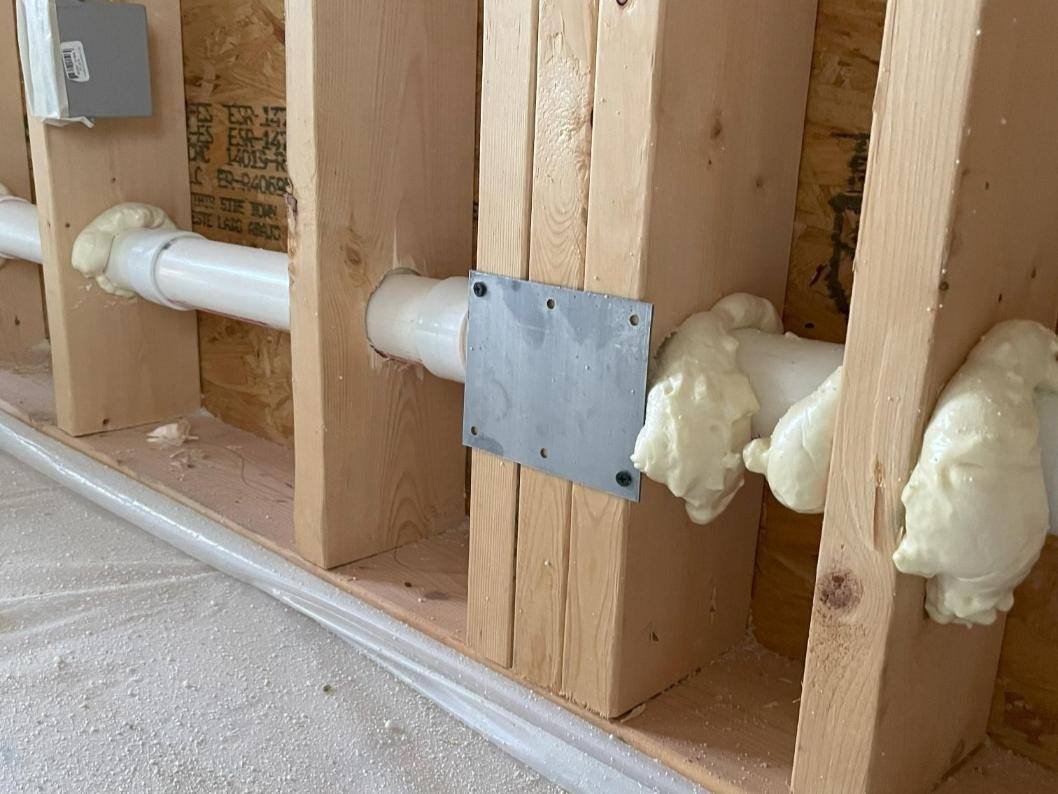Search for topics or resources
Enter your search below and hit enter or click the search icon.

All it takes is one burst pipe to create a nightmare. You may have dealt with the aftermath of a frozen pipe before. Or, perhaps you've heard the horror stories from someone else. Regardless, the consequences of a burst pipe are enough to warrant as much prevention as possible. If spray foam insulation is such a great insulator, could spray foam stop pipes from freezing?
South Central Services has insulated hundreds of new and existing homes around Martinsburg, West Virginia. Spray foam insulation can contribute to creating a temperate environment for your pipes. However, the role of spray foam also depends on the location of the pipe.
By the end of this article, you will understand the relationships between spray foam insulation and frozen pipes.
It is a fallacy that pipes must be encapsulated with spray foam insulation. Pipes can be encapsulated with spray foam, but this is not a requirement. The biggest concern with pipes is creating thermal separation.
You want to have effective thermal insulation between pipes and the exterior walls or ceiling to stop any cold from touching the pipe. Pipes should be as interior as possible.
It is poor design for a pipe to be flush against the exterior of a building. Pipes that must be run on exterior walls should be held as far to the interior of the wall as possible, with adequate insulation between the pipe and the house's exterior.
When a pipe is thermally exposed only to the interior of the home, the risk of the pipe freezing decreases. The climate the pipe exists in is warm.
Our area of Pennsylvania had an uncommonly cold winter. Several stretches of days were below freezing. These circumstances were prime to create frozen and burst pipes.

When we have irregularly cold days, and it stays cold, that's when the risks get higher.
The weather's unpredictability is why an effective thermal insulator is so vital. Mediocre insulation may work in below-freezing weather for a few hours or a day. But the extended stretches of time are too much for budget insulation. The interior climate won't be as warm as it needs to be.
Using more effective insulation like spray foam can mitigate the risk of freezing pipes.
We commonly see pipes freeze around the basement band boards and between the first and second floors. These areas are more difficult to insulate when using traditional insulation, and usually do not have an effective thermal insulator. By installing spray foam in these areas, pipes are better protected from cold air.

We also see pipes freeze in the interior of the thermal envelope, because of a lack of air-seal there. An example would be exterior walls insulated with fiberglass batt. Batt insulation cannot provide an air-seal. So, any pipes installed in these walls, even if they are located appropriately in the interior, run the risk of freezing.
One other area you may consider insulating is your crawl space. Many homes with crawl spaces have pipes and plumbing running through them. These crawl spaces are also vented, which means they are open to uncontrolled cold air. By encapsulating, you can protect those pipes. The environment of an encapsulated crawl space is controlled and temperate.

If you're in the process of building or remodeling, now is the time to examine the location of your pipes and the insulation surrounding them. When building new, you can cut costs by opting for budget-friendly insulation. However, you sacrifice performance.
In a climate zone like ours, there is always a chance for unexpected cold weather that can lead to a frozen pipe. You do not want to take that chance. Be sure to have your pipes installed well within the interior and to air-seal where cold air could infiltrate.
No one wants to deal with a burst pipe. It is a nightmare to clean up from. Pipes are most likely to freeze and burst during winter, specifically during extended and extreme cold.
The best defenses against freezing pipes are installing pipes in appropriate locations during construction, and air-sealing around them. Spray foam insulation can be used in basement band boards, between floors, and in crawl spaces to stop air infiltration. A warmer interior makes for warmer pipes.
Now that you know how spray foam can help to prevent pipes from freezing, your next step is to:
Disclaimer: While we strive to publish information accurate to building science, local building codes and standards supersede our recommendations.
Kilian has co-owned and operated South Central Services for 8 years. He is passionate about community involvement. In his spare time, he enjoys being with his family, playing ice hockey, and going fishing with friends.
Topics: